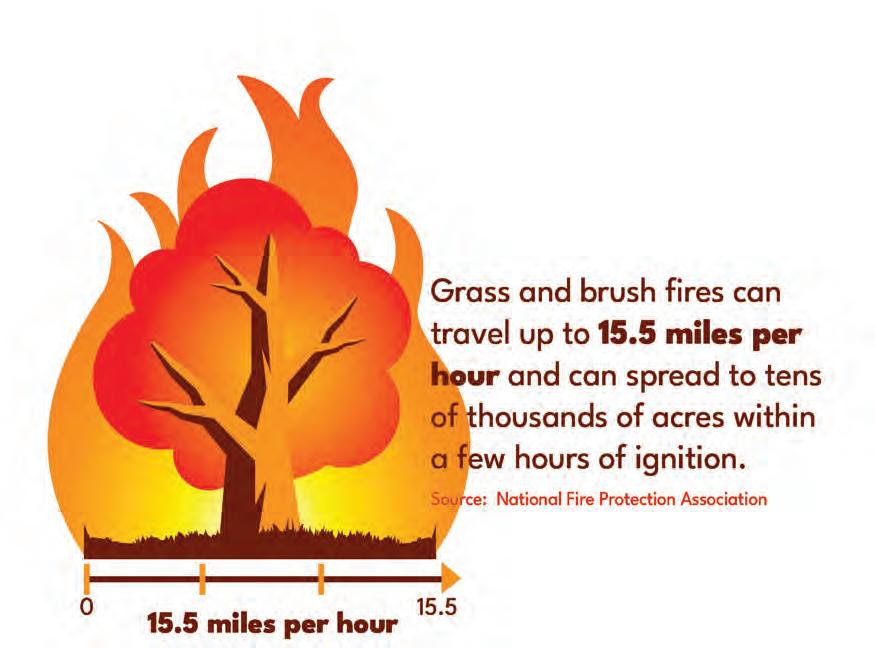
1 minute read
Protect you, your neighbor and your community: Prevent grass and brush fires
Grass and brush are excellent fuels for fire, making fires involving ground cover and foliage extremely dangerous and destructive. Grass and brush fires, which are often referred to/ generalized as wildfires in the U.S. can travel up to 15.5 miles per hour. These fires can spread to tens of thousands of acres within a few hours of ignition. In North America, the peak season for grass and brush fires is between June and August, but they can occur year-round. While they are most common in desert areas and locations experiencing prolonged drought, grass and brush fires can occur anywhere that weather conditions are dry and winds are high.
Grass and brush fires can occur naturally when lightning strikes the ground or when high winds bring down power lines, both of which can cause a spark and ignite a fire. However, 85% of wildfires are caused by humans. The more common causes include burning debris, using hot equipment on grass, improperly discarding cigarettes, leaving campfires unattended and intentionally setting a fire.
To keep your family safe from grass and brush fires, follow these safety tips:
• Be awar
Weather Watches issued by the National
Weather Service.
• Never build a campfire, shoot fireworks, burn debris, use a barbecue pit or initiate a controlled burn when warnings are in effect. Before engaging in any of these activities, check local ordinances.
• If engaging in these activities, never leave the area unattended and keep a shovel, bucket of water, fire extinguisher or other fire suppression tools on hand.
• If you see a downed power line or other damaged electrical equipment, notify SMEC immediately. Never approach a downed power line or try to move one; stay at least 50 feet away from the area and warn others to do the same.
• Do not park cars, trucks, boats or recreational vehicles on dry grass or shrubs. Always keep vehicles properly maintained to avoid sparking and overheating.
• Use an approved spark arrester on all internal combustion engine-powered equipment used on your property, such as lawnmowers, chainsaws, tractors and trimmers. Check and










